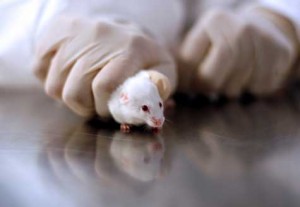Earlier this year, 65 Seattle-area high school students spent a day at the University of Washington’s Institute for Stem Cell and Regenerative Medicine as part of the 2011 Youth Ethics Summit, co-sponsored with the Northwest Association for Biomedical Research (NWABR).
The institute’s co-director, Dr. C. Anthony Blau, gave an overview of stem cell ethics, medicine, and biomedical research. The students then toured labs and watched beating heart cells in a petri dish. They also worked hands-on with planaria, a non-parasitc flatworm, and Play-Doh to learn about worm regeneration: one worm divided into 279 pieces grows into 279 worms.
Giving teachers and students an understanding of how the research process works — of how molecules become medicine — is critical to the pushback against animal rights activists, says Susan Adler, the NWABR’s executive director. The group’s Ethics in Science program is a model for educational outreach funded by Collaborations to Understand Research and Ethics, a Science Education Partnership Award from the National Center for Research Resources at the NIH.
Each year, 25 teachers congregate for a weeklong professional development workshop. They study cases posing ethical dilemmas, like that of a boy who needs a pig liver to keep him alive until he can have a transplant. The teachers learn to identify all the stakeholders involved and their different values — exercises they later repeat in classrooms with their students.

Determined legal eagles work to increase animals’ rights and possibly even grant them “personhood.” Click the image to read the story.
Adler says they train them to ask, “What’s the value driving the boy and his parents? Is it the importance of life and keeping him alive?’” For the hospital involved, the value may be deciding whether to do an experimental treatment on the boy. Animal activists’ value is their belief that it is wrong to use the pig. With this exercise, workshop participants become increasingly aware of the complexity of each situation.
Ultimately, Adler says, “students must justify the decision they make based on the ethical principles they learned.”
Some 1,500 U.S. teachers have attended NWABR workshops to learn to present bioethics in classrooms. “Then they are seeding other teachers,” says Adler. NWABR also holds junior science cafés modeled on the grassroots Cafés Scientifique in Europe. On the menu: refreshments and informal science chat, all outside the classroom. In February, inspired by NWABR, Seattle’s Cleveland High School held its inaugural café for 50 students and 9 teachers.
NWABR also offers online courses and downloadable curriculum (see stem cell development lesson). The National Association of Biology Teachers is another source of teaching materials.
Sign up for the free Miller-McCune.com e-newsletter.
“Like” Miller-McCune on Facebook.
Follow Miller-McCune on Twitter.
Add Miller-McCune.com news to your site.





